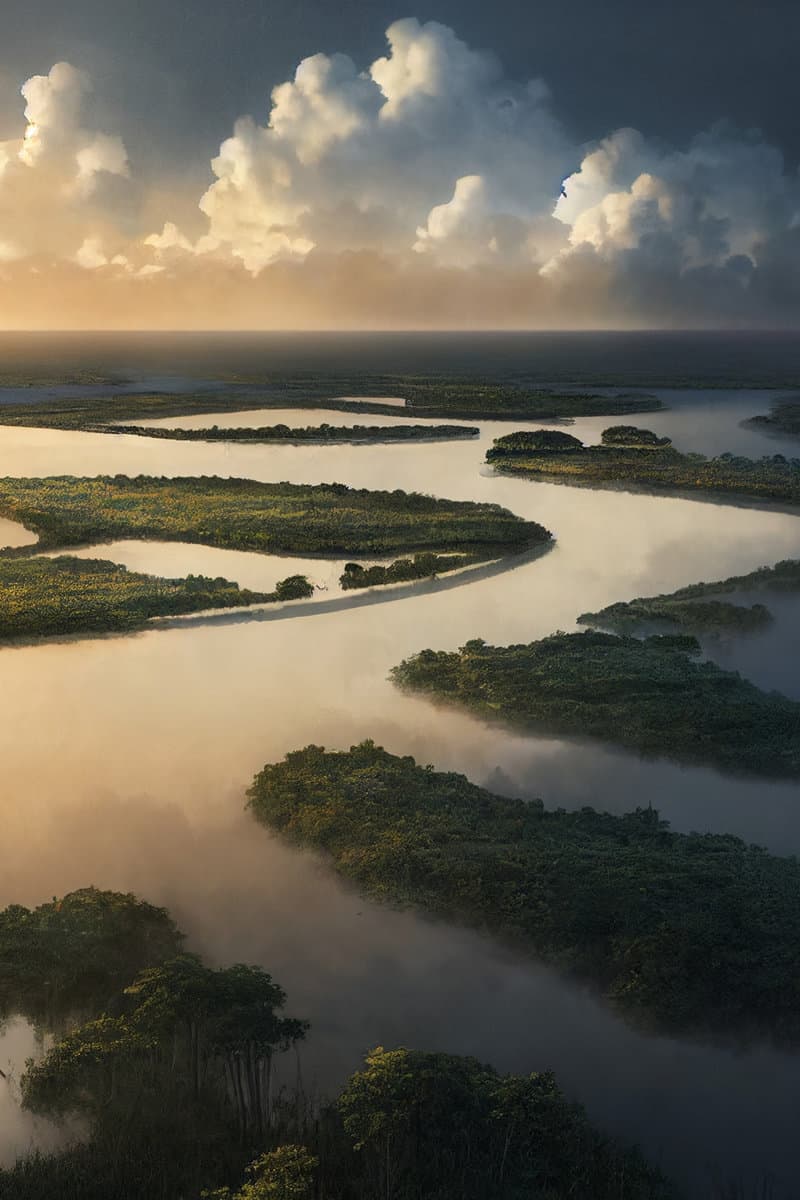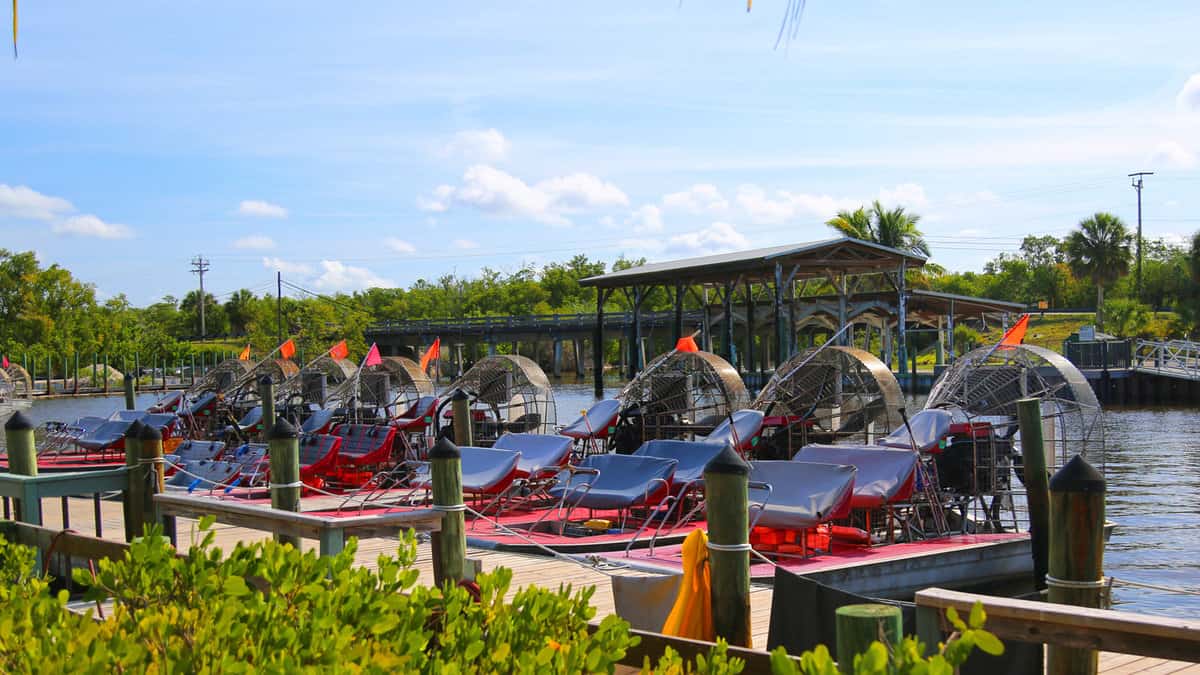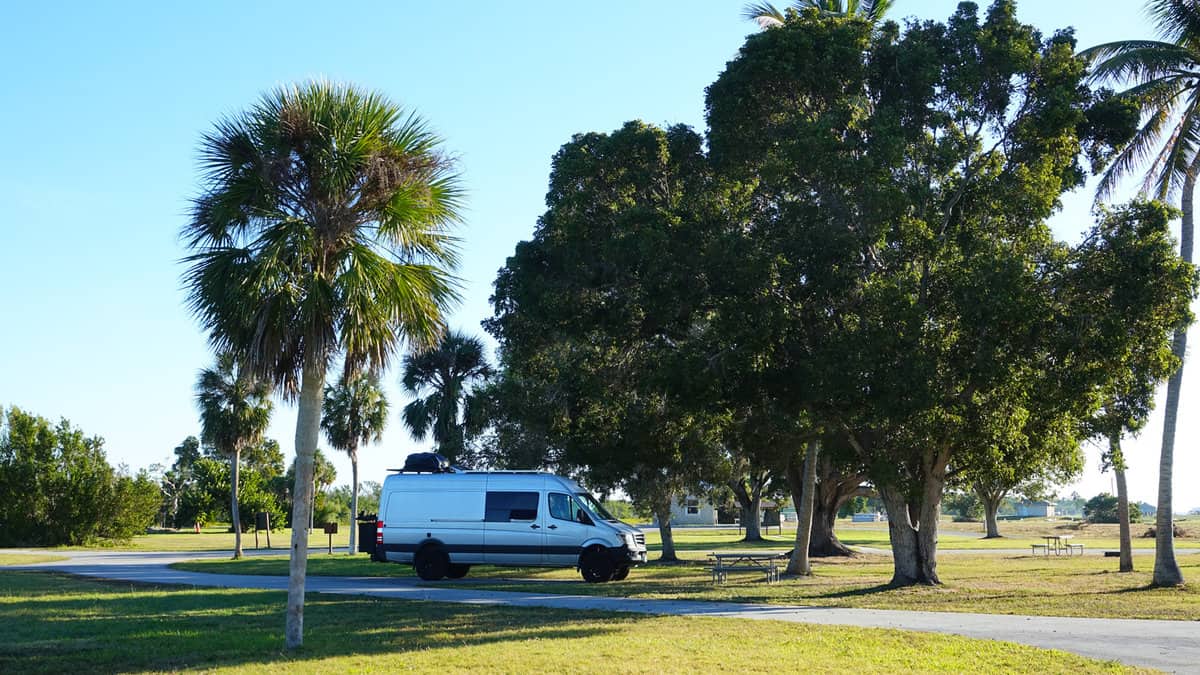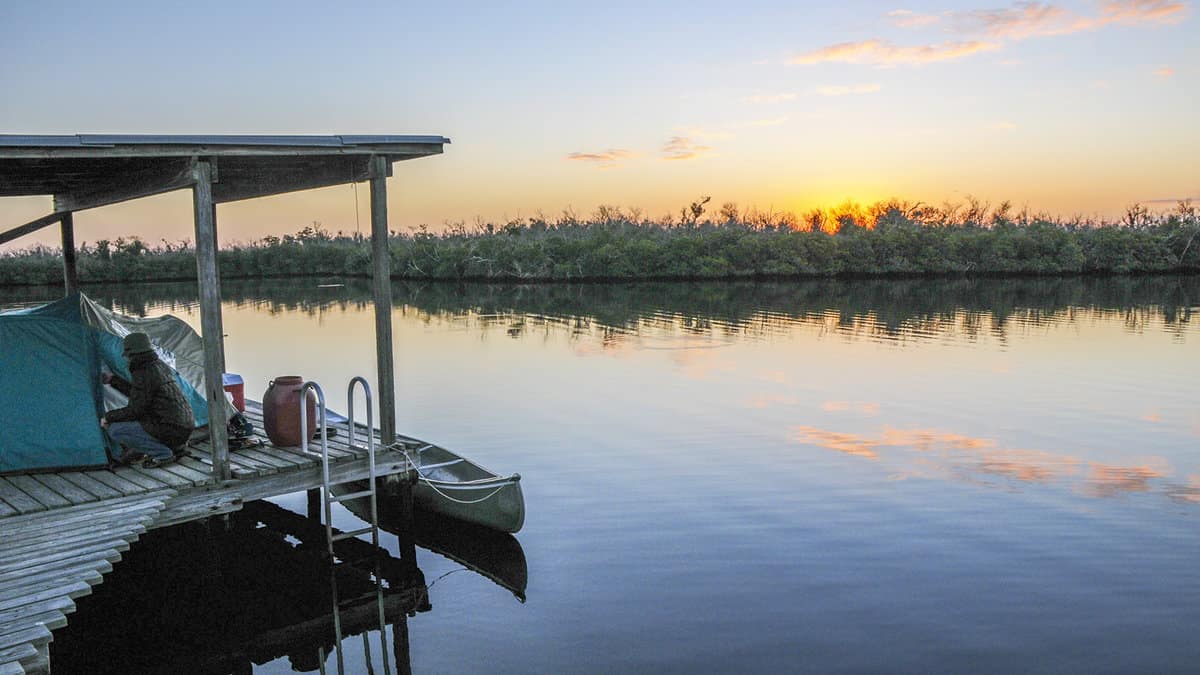Escape the hustle and bustle of daily life with an unforgettable camping adventure at the Everglades National Park!
From peaceful front-country campgrounds to remote backcountry sites, the Everglades National Park offers endless opportunities to pitch your tent in paradise.
In this comprehensive guide, you'll discover the best campgrounds, scenic trails, water activities, and wildlife viewing in this national park.
So pack up your tent and get ready to pitch it in one of America's most remarkable wild places. An adventure of a lifetime awaits in the magical River of Grass!
Discovering the Everglades National Park
Welcome to the Everglades National Park, one of the world's most unique and awe-inspiring ecosystems.

Located in southern Florida, this national park spans over 1.5 million acres and is home to a diverse range of flora and fauna.
The Florida Everglades is a wetland ecosystem home to many rare and endangered species, including the Florida panther, American crocodile, and West Indian manatee.
The park is also a popular destination for birdwatchers, with over 350 species of birds that call the Everglades their home.
As you explore the park, you will be amazed by the variety of landscapes, from sawgrass prairies to mangrove forests and coastal estuaries.
The Ernest F. Coe Visitor Center is a great starting point for your adventure, providing information on park activities, wildlife, and history. Everglades City, a small town on the park's western edge, is a great place to experience the area's culture.

Here, you can take an airboat tour, visit a museum, or try local seafood.
RV or Backcountry, Choose Your Perfect Camping Experience in the Everglades
If you prefer to camp with the convenience of an RV, the Everglades National Park offers two developed campgrounds: Long Pine Key Campground and Flamingo Campground.
Both campgrounds offer RV sites, for RVs with a maximum length of 35 feet, with electrical hookups and tent camping sites.
Additionally, Flamingo Campground offers cabins, eco-tents, and houseboat rentals. For backcountry camping, Sweetwater Chickee and Crooked Creek are must-visit sites.
RV Camping Sites at the Everglades National Park
1. Long Pine Key Campground
Long Pine Key Campground is located in the northern part of the park and has 108 campsites with electrical and water hookups, picnic tables, and fire rings.
The campground also has restrooms with flush toilets, hot showers, and a dump station. Reserve your spot, especially if you plan to stay during the peak season.
The campground is open seasonally from November to May and is managed by the “Flamingo Adventures” concession.
2. Flamingo Campground

Flamingo Campground, located in the southern part of the park, offers 274 sites. Of these, 41 sites have electric hookups, and 65 sites for RVs only.
The campground has a dump station where you can dispose of your RV waste and a camp store where you can buy food and camping supplies.
There are also restrooms with flush toilets and solar-heated hot showers. Reservations are strongly recommended, as the campground fills up quickly during peak season.
Backcountry Camping Sites at the Everglades National Park
If you're looking for a more rugged camping experience, backcountry camping is available throughout the Everglades National Park.
But before getting to the list of sites, here are quick facts you should know while planning your backcountry camping in this historic national park:
Quick Facts Before Backcountry Camping at the Everglades National Park
Several campsites are accessible by foot, canoe, or kayak. Just keep in mind that permits are required for backcountry camping, so be sure to get one at one of the park's visitor centers before you set off.
When you're backcountry camping, it's important to follow Leave No Trace principles and pack out all of your trash. Fires are also not allowed, so bring a camp stove for cooking.
And be sure to store all of your food and scented items in bear-proof containers or hang them from a tree at least 10 feet off the ground and 4 feet away from the trunk.
But don't let all of that scare you off! Backcountry camping in the Everglades National Park is an unforgettable experience. So, finally, here are the highly recommended sites you can choose from:
1. Sweetwater Chickee

Sweetwater Chickee is a double chickee campsite at the heart of the Everglades National Park. Sweetwater Chickee is a popular spot for canoeists and kayakers, as it is located at mile marker 99 on the Everglades Wilderness Waterway.
It's accessible by boat only, so you'll need to paddle or kayak your way there. Once you arrive, you'll be greeted by a pair of raised platforms with thatched roofs.
The chickee can accommodate up to six people on each side and, luckily, has a portable toilet.
However, there is no running water or electricity at the chickee, so you should bring your own hygienic supplies. To reserve a stay at the Sweetwater Chickee at the Everglades National Park, you can make advanced reservations.
Advanced reservations are available on a rolling basis, three months in advance of the start date. Also, there will no longer be campsites held as "walk-ups."
Please note that starting January 2, 2023, all Marjory Stoneman Douglas Wilderness campsites will only be available for advanced reservations.
2. Crooked Creek
Another wilderness campsite within the Everglades National Park, Crooked Creek, is also accessible via the Wilderness Waterway.
@brick721 made a lot of friends 🐊 #everglades #nationalpark #evergladesnationalpark #alligator #bike #florida ♬ daydream - Luna Li
Crooked Creek is a popular destination for backpackers and canoeists because of its remote location and its stunning scenery. Mangrove forests, sawgrass prairies, and shallow bays surround the campsite.
It is a great place to see a variety of wildlife, including alligators, crocodiles, dolphins, manatees, and birds.
To reach Crooked Creek, you should first get a wilderness camping permit from the Flamingo Visitor Center. The campsite is accessible by canoe or kayak from the Wilderness Waterway. The paddle from the Flamingo Visitor Center takes about 9 miles.
Once at the campsite, which accommodates up to 6 people, visitors will find a raised platform with a roof and a picnic table. There is also a fire ring and a composting toilet.
5 Unique Camping Options
When it comes to camping at the Everglades National Park, there are several unique options to choose from that offer a one-of-a-kind experience.Here are some of the most unique camping options in the park:
1. Eco-Tents
For those who want to experience the great outdoors without sacrificing comfort, eco-tents are a great option. These tents come equipped with beds, linens, and even electricity, providing a comfortable camping experience without sacrificing the beauty of the Everglades.
There are several eco-tent options available throughout the park, including those operated by Everglades Guest Services.
2. Cabins
If you're looking for a more traditional camping experience, cabins are a great option. These rustic accommodations offer a cozy place to rest your head while still allowing you to enjoy the park's beauty.
Several cabin options are available throughout the park, including those operated by Everglades Guest Services.
3. Glamping
For those who want to combine the comforts of home with the beauty of nature, glamping is the way to go.
Glamping options in the park include everything from luxury tents to fully-equipped cabins with modern amenities like air conditioning and Wi-Fi. Everglades Guest Services offers several glamping options throughout the park.
4. Views
The stunning views are among the best things about camping at the Everglades National Park.
Some of the best views in the park can be found at the Long Pine Key Campground, which offers sweeping vistas of the surrounding wilderness.
5. Everglades Guest Services
For those who want to take the stress out of camping, Everglades Guest Services is a great option.
This company offers a variety of camping options throughout the park, including cabins, eco-tents, and glamping accommodations. They also provide a range of amenities, including guided tours, campfire rentals, and more.
Planning Your Camping Trip
Before you embark on your camping trip to the Everglades National Park, it is important to plan to ensure a smooth and enjoyable experience.
Here are some tips to help you plan your camping trip:
Reservations and Permits
Making advanced reservations for campsites within the park is highly recommended, especially during peak season. You can make reservations up to six months in advance through recreation.gov.
Some campsites require a wilderness camping permit, which can also be obtained through recreation.gov. Check if the campsite you plan to stay at requires a permit beforehand.
Campsite Options
The Everglades National Park offers a variety of camping options, from frontcountry to backcountry camping.
The frontcountry campgrounds offer amenities such as running water, restrooms, and picnic tables, while backcountry camping requires hikers to carry all of their supplies and camp in designated areas.
The park also offers chickees, raised platforms with roofs, for backcountry camping in the wetlands.
What to Bring
When camping within the Everglades National Park, you should bring all necessary camping gear, including a tent, sleeping bag, and cooking supplies.
It is also essential to bring plenty of water and insect repellent, as mosquitos and other bugs can be prevalent in the park.
Safety Tips
When camping in the Everglades, it is important to practice Leave No Trace principles, such as packing out all trash and minimizing environmental impact.
It is also essential to be aware of wildlife, such as alligators and snakes, and to keep a safe distance. Make sure also to follow park rules and regulations to ensure a safe and enjoyable camping experience.
Pitching Your Tent
Pitching your tent is a crucial part of the camping experience. It provides shelter from the elements and a place to rest after a long day of exploring the park.
Here are some tips to make sure you have a successful tent setup:
1. Choose a level and clear spot.
Look for a flat area without any rocks, sticks, or debris that could damage your tent or sleeping bag. Avoid setting up camp in low-lying areas that may flood during heavy rain.
2. Set up your tent before sunset.
It's always best to set up your tent during daylight hours. This will give you enough time to make any necessary adjustments and avoid any potential hazards in the dark.
3. Secure your tent.
Make sure your tent is securely staked down to prevent it from blowing away during high winds. Use guylines and additional stakes if necessary.
4. Keep your gear organized.
Keep your gear inside the tent or in a designated area outside. This will help prevent tripping hazards and keep your gear dry in case of rain.
5. Use a ground cloth.
Use a ground cloth underneath your tent to protect it from moisture and sharp objects. This will also help extend the life of your tent.
6. Consider a footprint.
A footprint is a custom-sized ground cloth that is designed to fit your tent. It provides an extra layer of protection and can help extend the life of your tent.
Navigating the Waterways
With over 800 square miles of marine waters, the park offers endless opportunities for boating, kayaking, and fishing.
Here are some tips to help you navigate the waterways like a pro:
Boat, Canoe, or Kayak?
Deciding on the best way to navigate the waterways depends on your preference and experience level.
If you're an experienced boater, you can rent a motorboat or bring your own. For a more peaceful and eco-friendly experience, consider canoeing or kayaking.
Paddling through the mangrove tunnels and open waterways is an unforgettable experience.
Wilderness Waterway
If you're up for a multi-day adventure, consider paddling the Wilderness Waterway. This 99-mile route runs from Everglades City to Flamingo and takes about 7-10 days to complete.
Along the way, you'll paddle through the Ten Thousand Islands and experience some of the most remote and beautiful areas of the park.
Gulf Coast Visitor Center
The Gulf Coast Visitor Center is a great place to start your water-based adventure. From here, you can rent kayaks, canoes, and motorboats.
The center also offers guided tours, including manatee-watching tours and sunset cruises. Be sure to check the park's website for current rental and tour availability.
Fishing
Fishing is a popular activity in the park. You can fish from the shore or a boat, but be sure to follow the park's fishing regulations. Some areas of the park are designated as catch-and-release only, while others have specific size and bag limits.
Marina
If you're bringing your own boat, the Flamingo Marina is the main marina in the park. It offers boat slips, fuel, and other amenities. Keep in mind that the marina can get busy during peak season, so it's best to make reservations in advance.
Exploring the Wilderness
One of the best ways to explore the park is by hiking. There are several trails available, ranging from easy to difficult, that will take you through some of the park's most scenic areas.
Some of the most popular trails include the Anhinga Trail, the Gumbo Limbo Trail, and the Shark Valley Trail.
If you're looking for a more challenging hike, head over to the nearby Big Cypress National Preserve. With over 729,000 acres of swamps, prairies, and forests, there are plenty of opportunities to explore.
Camping with Pets
Pets are not allowed on most trails in the park. This is to protect the park's wildlife and to ensure that your pet does not disturb or harm any animals.
However, there are some trails where pets are allowed, such as the Shark Valley Tram Road and the Old Ingraham Highway. Be sure to check with park rangers for a list of approved trails.
When it comes to camping with pets, the park allows pets in designated areas only.
The Long Pine Key Campground and the Flamingo Campground both have designated pet loops where pets are allowed. Be sure to reserve a site in the pet loop when making your reservation.
While camping with pets, it's important to follow some basic guidelines to ensure a safe and enjoyable experience for both you and your pet. Here are some tips:
- Keep your pet on a leash at all times.
- Clean up after your pet and dispose of waste properly.
- Bring plenty of water and food for your pet.
- Keep your pet in your tent or vehicle at night to prevent them from wandering off or disturbing other campers.
- Be aware of the park's wildlife and keep your pet away from any animals you may encounter.
Seasonal Considerations
When planning your camping trip to the Everglades National Park, consider the time of year you'll be visiting.
The park experiences two distinct seasons: the dry season and the wet season.
Dry Season
The dry season runs from December to April and is considered the peak season for camping at the Everglades National Park. During this time, temperatures are cooler, and there is less rainfall, making it an ideal time for hiking and exploring the park.
Wet Season
The wet season runs from May to November and is characterized by hot, humid weather and frequent rainfall. While this season may not be as popular for camping, it can still be a great time to visit the park.
The wetlands come alive during this time, with lush vegetation and abundant wildlife. However, be prepared for mosquitoes and other biting insects.
Peak Season
Peak season at the Everglades National Park is from December to April, during the dry season. This is when the park is busiest, with the most visitors and the highest demand for campsites.
If you plan on visiting during peak season, be sure to make reservations well in advance to ensure availability.
Safety Tips
Here are some general safety tips to keep in mind when camping in the Everglades:
- Keep your campsite clean and store food in bear-resistant containers to avoid attracting wildlife.
- Bring plenty of water and stay hydrated, especially during the hot summer months.
- Wear insect repellent to avoid mosquito bites and other insect-borne illnesses.
- Be aware of the weather conditions and seek shelter in case of lightning or severe weather.
- If you're hiking, stay on designated trails and be prepared for the terrain and wildlife you may encounter.
Enjoy the Beauty of the Everglades
Camping inside the Everglades National Park allows you to fully immerse yourself in the natural beauty and serenity of this unique ecosystem.
As you pitch your tent under the stars, paddle through the lush waterways, and wake up to the sights and sounds of wildlife, you'll create memories to last a lifetime.
Remember to reserve your campsite well in advance, especially during peak season.
Arrive prepared with all the necessary gear, supplies, and knowledge to camp comfortably and safely.
Take time to relax and soak in the scenic views, and don't overpack your itinerary. The Everglades has a pace of its own — go with it.
However you choose to experience the Everglades National Park, camping provides the perfect opportunity to disconnect from daily stress and connect on a deeper level with nature.
Happy camping!
Also read:
Everglades National Park: A Complete Visitor’s Guide
Top 5 Sites to See Bald Eagles in Florida: A Birdwatcher’s Guide
Camping on the Gulf, Miramar Beach, Florida: Relax In Paradise
4 Underrated Girls Trips in Florida
